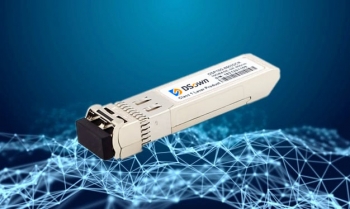Difference Between 2.4ghz And 5ghz Wireless

Introduction
Wireless technology for industrial applications has been a key factor in the success of the Industrial Internet of Things (IIoT). The rapidly deployable technology has given companies the ability to extend networking communications in areas where traditional wiring may be too expensive or not possible and has allowed for the introduction of new types of technology. This combination has led to increased productivity and expanded services, in a safer more efficient manner.
Primary Wi-Fi Signals
The IEEE 802.11 wireless communication standards we use today for industrial wireless routers have three different frequencies or bandwidths - 2.4GHz, 5Ghz, and in the near future 6Ghz. It is a good idea to have a basic understanding of how these frequencies operate to ensure you get the most out of your enterprise or operational wireless network.
Wireless Basics
All wireless communications operate using channels to transmit and receive data. These channels have a specified width (measured in megahertz) which determine the speed data can be sent and received. The width of these channels can be aggregated to increase speed and throughput of the data. However, by aggregating channel width you will reduce the channels available for use.
Wireless bandwidth is partly dependent on channel width and frequency. As a rule of thumb, the higher the frequency, the wider the channel, the faster your bandwidth speeds will be.
Wireless bandwidth is partly dependent on channel width and frequency. As a rule of thumb, the higher the frequency, the wider the channel, the faster your bandwidth speeds will be.
Characteristics of a Wireless Wave
2.4GHz, 5GHz, and 6GHz are wireless frequencies based on electromagnetic spectrum wavelengths. Each wavelength has its own characteristics for each frequency. The 2.4GHz wavelength is long and dense, making it a great choice for long distances or in areas with lots of obstructions and great for penetrating floors, drywall, concrete or steal. 5GHz has a shorter wavelength making it ideal for high-speed applications in open areas where obstructions are limited. 6GHz, is set to be the fastest of the three frequencies but we will have to wait and see.
Difference Between 2.4GHz and 5GHz
The 2.4GHz wireless spectrum consists of 14 channels, however, not all channels are available for use. Different countries have different regulation bodies that control which channels can be used. In North America, the FCC regulation permits the use of only channels 1 - 11, while channels 12 - 14 are not permitted.
The 11 available channels are 20MHz wide with a 5MHz of spacing between them. The 5MHz spacing causes channel overlapping which leads to poor connectivity and undesirable results. For these reasons, in North America, it is considered a best practice method to use only use channels 1,6,and 11 - the three non-overlapping channels. You can arrogate 2 x 20Mhz channels into 1 x 40Mhz channel for increased throughput, but this option restricts channel availability and is not recommended.
2.4Ghz supports IEEE 802.11b /g /n networking protocols. Each of these protocols use 20MHz channels, with the exception of 802.11n which can be used for both 20 and 40MHz channels.
The 5GHz spectrum uses 24 non-overlapping channels divided in four different sections UNII-1, UNII-2, UNII-2 extended, UNII-3, and ISM. Each section has its own recommended uses and restrictions. Each channel is also 20Mhz wide with 20MHz of space separating the channels.
5GHz uses a variety of channel widths allowing 20MHz, 40MHz, 80MHz, and 160MHz, unlike 2.4GHz which allows for only two channels widths (20Mhz & 40Mhz). The 5GHz also supports the IEEE 802.11a /n /ac networking protocols. The higher frequency combined with ultrawide channel width plus the latest 802.11ac standard makes 5GHz ideal for high-speed wireless networking.
However, there is a downside to the 5GHz spectrum. The higher frequency also means it is less susceptible to obstacles and has a shorter distance span between the transmitter and receiver.
The 11 available channels are 20MHz wide with a 5MHz of spacing between them. The 5MHz spacing causes channel overlapping which leads to poor connectivity and undesirable results. For these reasons, in North America, it is considered a best practice method to use only use channels 1,6,and 11 - the three non-overlapping channels. You can arrogate 2 x 20Mhz channels into 1 x 40Mhz channel for increased throughput, but this option restricts channel availability and is not recommended.
2.4Ghz supports IEEE 802.11b /g /n networking protocols. Each of these protocols use 20MHz channels, with the exception of 802.11n which can be used for both 20 and 40MHz channels.
The 5GHz spectrum uses 24 non-overlapping channels divided in four different sections UNII-1, UNII-2, UNII-2 extended, UNII-3, and ISM. Each section has its own recommended uses and restrictions. Each channel is also 20Mhz wide with 20MHz of space separating the channels.
5GHz uses a variety of channel widths allowing 20MHz, 40MHz, 80MHz, and 160MHz, unlike 2.4GHz which allows for only two channels widths (20Mhz & 40Mhz). The 5GHz also supports the IEEE 802.11a /n /ac networking protocols. The higher frequency combined with ultrawide channel width plus the latest 802.11ac standard makes 5GHz ideal for high-speed wireless networking.
However, there is a downside to the 5GHz spectrum. The higher frequency also means it is less susceptible to obstacles and has a shorter distance span between the transmitter and receiver.
Which is Better?
Applications that require higher bandwidth speeds should take advantage of the 5GHz wireless spectrum. 2.4GHz falls short of the speeds that 5GHz offers. However, if you require connectivity between two points at longer distances and speed is not an issue, or if you have legacy equipment that requires wireless connectivity or have large obstacles in between your transmitter and receiver then 2.4GHz would be your best choice.


_thumbnail.jpg)




